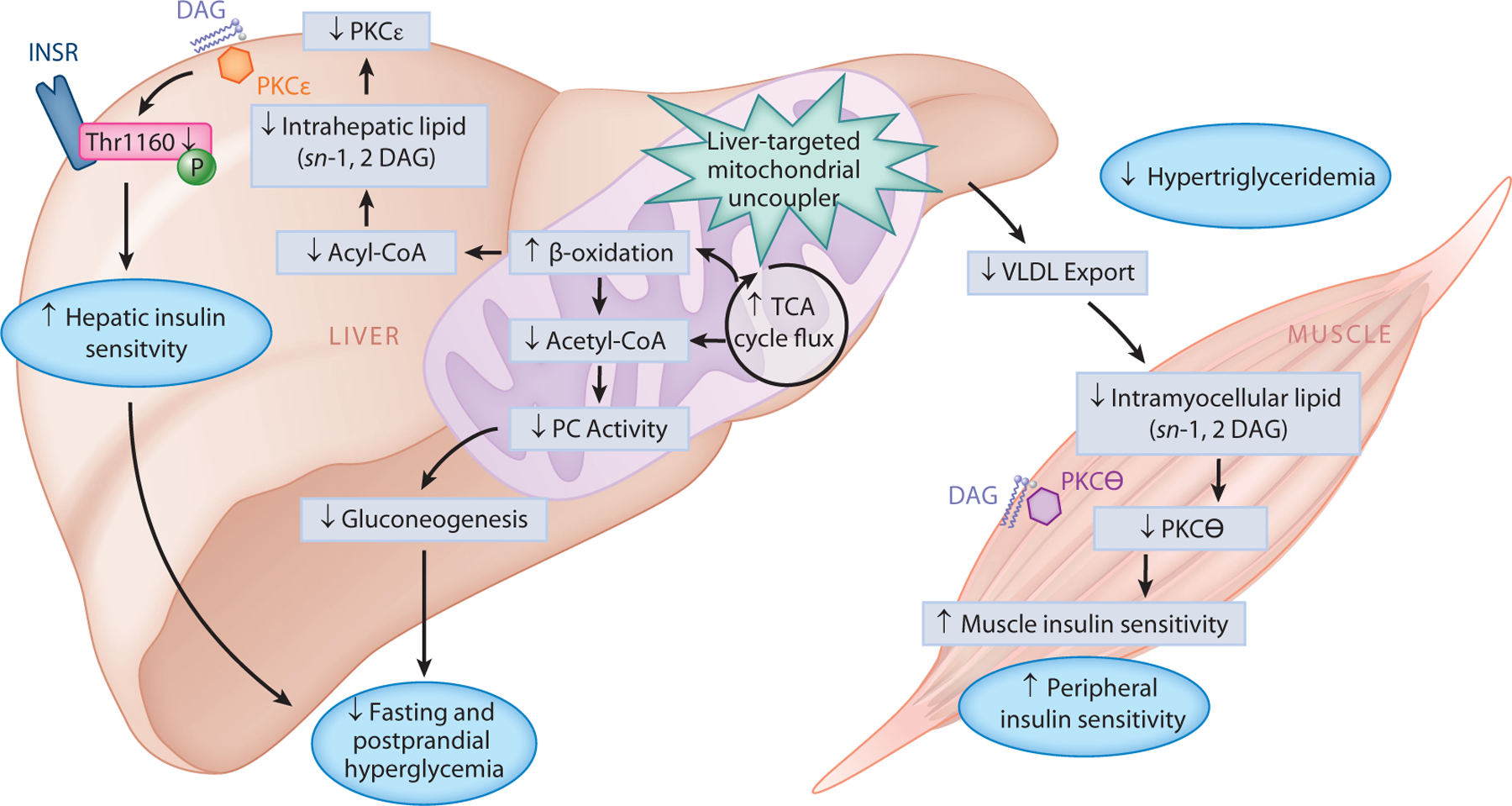Figure 3.

Therapeutic potential of liver-targeted mitochondrial uncouplers for the treatment of T2D. Promoting increased hepatic cellular energy expenditure through the use of liver-targeted mitochondrial uncoupling agents (such as DNP analogs, DNPME, and CRMP) holds therapeutic promise for the treatment of NAFLD, NASH, and T2D. By increasing fat oxidation exclusively in the liver, DNPME and CRMP lower hepatic triglycerides, DAGs, and PKCε translocation, which increases hepatic insulin sensitivity. Liver-targeted mitochondrial uncoupling also increases TCA cycle flux, which reduces hepatic acetyl-CoA content, PC activity, and gluconeogenesis; collectively, this leads to reduced fasting and postprandial hyperglycemia. Moreover, DNPME and CRMP also lower hepatic VLDL export, thereby reducing muscle DAG content, reducing PKCθ activity, and reversing muscle insulin resistance. Overall, these improvements in liver and muscle insulin resistance can reverse diabetes in rodent models of NASH and T2D and suggest that liver-targeted mitochondrial uncoupling agents may be a therapy for the treatment of T2D in humans. Abbreviations: CRMP, controlled-release mitochondrial protonophore; DAG, diacylglycerol; DNP, 2,4-dinitrophenol; DNPME, DNP–methyl ether; INSR, insulin receptor; NAFLD, nonalcoholic fatty liver disease; NASH, nonalcoholic steatohepatitis; PC, pyruvate carboxylase; PKC, protein kinase C; T2D, type 2 diabetes; TCA, tricarboxylic acid; Thr1160, threonine 1160; VLDL, very low-density lipoprotein.
